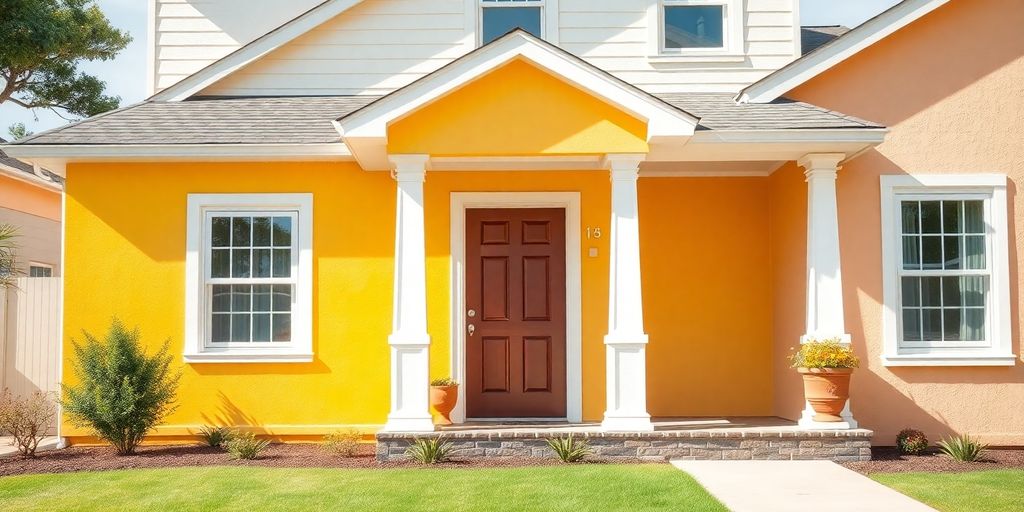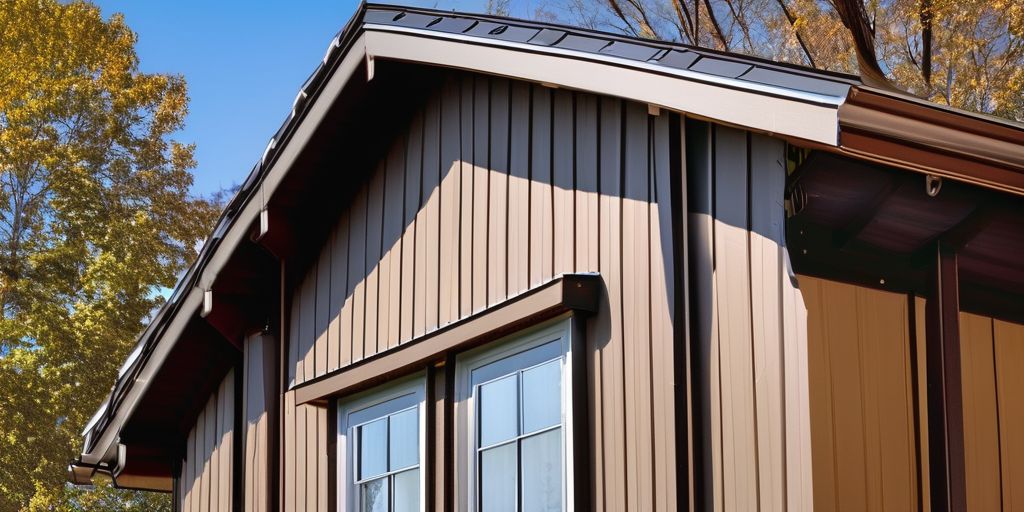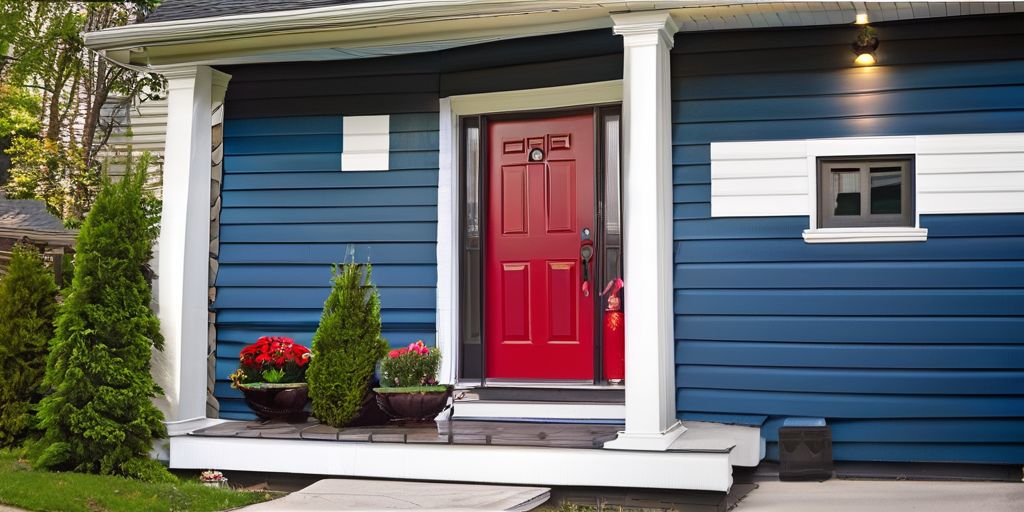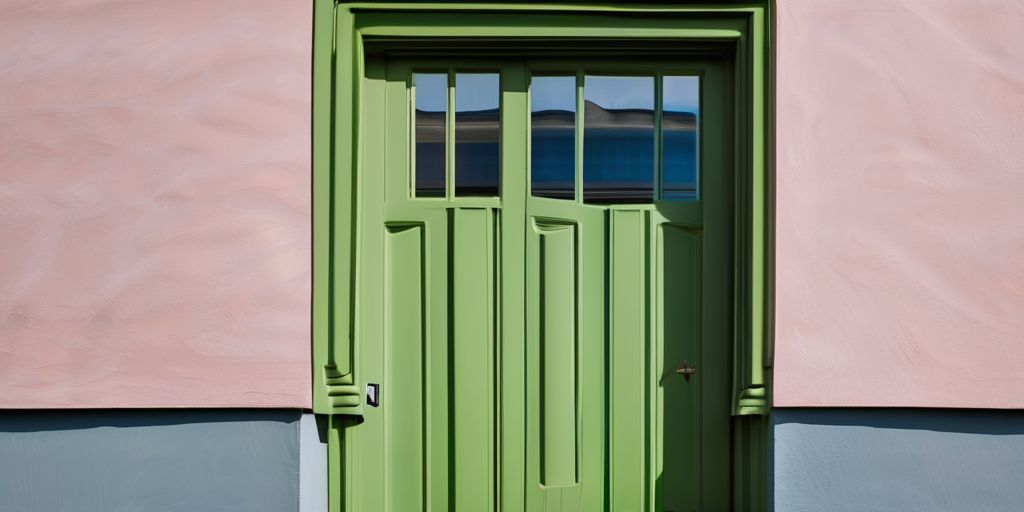Ever wondered why your paint job didn’t turn out as expected? Maybe it’s because you didn’t give it enough time to dry. Whether you’re painting a room or a whole house, knowing how long paint takes to dry can make or break your project. It’s not just about waiting until it’s dry to the touch; there’s a lot more to it. This guide will walk you through everything you need to know about drying times, so your next painting project is a success.
Key Takeaways
- Different paints have different drying times. Water-based dries faster than oil-based.
- Environmental factors like humidity and temperature can speed up or slow down drying.
- Proper ventilation is key to speeding up the drying process.
- Applying thin coats of paint helps it dry faster and more evenly.
- Rushing the drying process can lead to poor results like smudging or peeling.
The Basics of Paint Drying Times
Understanding Dry vs. Cure
When it comes to painting, there’s a big difference between a paint being dry and being cured. Drying refers to the point when the paint is no longer wet to the touch. Curing, on the other hand, means the paint has reached its maximum hardness and is fully set. Think of drying as the first step and curing as the finish line. It’s crucial to wait for the paint to cure before subjecting it to any stress or cleaning.
Factors Influencing Drying Time
Several factors can affect how quickly paint dries:
- Type of Paint: Different paints have different drying times. For instance, water-based paints dry faster than oil-based ones.
- Environmental Conditions: Humidity, temperature, and airflow play a massive role. Ideally, paint in mild, dry conditions.
- Surface Material: The material you’re painting on can also affect drying times. Porous surfaces like wood may take longer.
Common Types of Paint and Their Drying Times
Here’s a quick rundown of some common paints and how long they usually take to dry:
- Water-Based Paints: Typically dry to the touch in 1-2 hours.
- Oil-Based Paints: These can take 6-8 hours to be touch dry and up to 24 hours to fully cure.
- Enamel Paints: Often used for their glossy finish, these can take longer to dry than other types.
Factors That Affect How Long Paint Takes to Dry
Environmental Conditions
Painting isn’t just about slapping on some color; it’s a bit more nuanced. Temperature and humidity are big players in how quickly your paint dries. If it’s too hot or too cold, your paint might not dry properly. The sweet spot for most paints is between 50°F and 85°F. Humidity also matters—a lot. High humidity can slow down drying because the air is thick with moisture, making it hard for the paint to evaporate. Ideally, you want the humidity below 50% for the best results.
Surface Material Considerations
The surface you’re painting on can totally change the game. Different materials soak up paint differently. For instance:
- Wood: Absorbs paint quickly, but might need more coats.
- Metal: Needs a primer to help the paint stick.
- Drywall: Usually straightforward, but can absorb paint unevenly if not primed.
Each surface has its quirks, so knowing what you’re working with can save you a lot of hassle.
Impact of Ventilation
Good airflow is your friend when painting. It helps the paint dry evenly and prevents that "tacky" feeling. Open windows, use fans, or even a dehumidifier if you’re indoors. Outside, try to avoid painting on windy days—it can lead to uneven drying and even dust sticking to your wet paint.
Remember, the conditions around you are just as important as the paint itself. Keep an eye on the weather and your environment to get the best finish possible.
By understanding these factors, you can time your painting projects just right, ensuring a smooth and lasting finish.
For more tips on how to prepare your home’s exterior for painting, consider monitoring forecasts to avoid unexpected weather challenges.
Different Types of Paint and Their Drying Characteristics
Water-Based Paints
Water-based paints, often called latex paints, are quite popular because they dry quickly and are easy to clean up with just soap and water. Typically, they become touch-dry in about 2 to 4 hours, but for a full cure, you might need to wait up to 24 hours. They’re environmentally friendly, making them a great choice for those looking to reduce their ecological footprint. When choosing the right exterior paint, consider the benefits of water-based options for a quicker project completion.
Oil-Based Paints
Oil-based paints take a bit longer to dry compared to their water-based counterparts. Usually, they need about 6 to 8 hours to be touch-dry, and a full cure can take up to 24 hours. These paints are known for their durability and rich colors. Cleanup is a bit more involved, requiring turpentine or mineral spirits. If you’re after a durable finish, especially in high-traffic areas, oil-based might be the way to go.
Enamel Paints
Enamel paints are known for their hard, glossy finish. They can be either water-based or oil-based, and their drying times can vary. Generally, they take longer to dry than other types of paint. This makes them ideal for surfaces that need a durable, glossy finish, but patience is key when waiting for them to dry. For those in different climates, understanding the durability of enamel paint can help in making an informed choice.
Practical Tips for Speeding Up Paint Drying
Painting can be a rewarding task, but waiting for paint to dry? Not so much. Luckily, there are ways to cut down on drying time and get that room back in action.
Proper Surface Preparation
Before you even think about opening that paint can, make sure your surface is ready. Here’s how:
- Clean and dry: Remove any dirt or grease. A clean surface helps paint adhere better, speeding up drying.
- Prime it right: Using a primer can seal the surface, allowing for quicker and more even drying.
- Smooth it out: Sand any rough spots for a uniform finish.
Using the Right Tools and Techniques
The tools you use can make a big difference in how fast your paint dries. Consider these tips:
- Opt for high-quality brushes or rollers. They provide a more even coat, which dries faster.
- Apply thin layers of paint. Thick coats take longer to dry and can lead to drips.
- Use a paint roller instead of a brush for larger areas. This helps achieve a thinner, more consistent coat.
Enhancing Ventilation
Good airflow is key to speeding up drying times. Here’s what you can do:
- Open windows or use fans to circulate air. This helps solvents evaporate faster.
- If you’re painting outside, consider using a fan to keep air moving and avoid sticky situations.
- Avoid painting in high humidity; it can slow down drying considerably.
Remember: While speeding up drying is great, patience is still important. Rushing can lead to mistakes that take even longer to fix. Happy painting!
Common Mistakes to Avoid When Painting
Rushing the Drying Process
When you’re eager to see the final results, it can be tempting to speed things along. However, rushing can lead to peeling, bubbling, or an uneven finish. Allow each coat to dry completely as per the manufacturer’s instructions. Here’s what to watch out for:
- Touching the Paint Too Soon: Even if it feels dry, the layers beneath might still be curing. Patience is key.
- Applying a Second Coat Prematurely: This can result in a surface that’s uneven and prone to damage.
- Skipping Sanding Between Coats: A light sanding can help with adhesion, especially if you’re aiming for a glossy finish.
Ignoring Weather Conditions
The weather can play a big role in how your paint dries. High humidity or extreme temperatures can affect the drying time and finish quality.
- High Humidity: This slows down drying as moisture in the air prevents evaporation.
- Cold Temperatures: Can cause the paint to dry too slowly, leading to possible condensation issues.
- Direct Sunlight: May cause the paint to dry too quickly, resulting in cracks or blisters.
Applying Too Thick a Coat
It might seem like a thicker coat will save time, but it usually leads to problems like drips and longer drying times. Instead, aim for multiple thin layers. Here’s a quick guide:
- Use a Roller for Even Application: This helps in applying a thin, uniform coat.
- Check Paint Consistency: Ensure your paint isn’t too thick before application.
- Mind the Edges and Corners: These areas often accumulate excess paint.
Taking your time and following these steps can make a huge difference in the final outcome. From the right weather conditions to the perfect application technique, avoiding common mistakes ensures a smooth finish.
By keeping these tips in mind, you’ll be well on your way to achieving a professional-looking paint job at home. Remember, a little patience goes a long way in painting. For more insights on how to avoid pitfalls in your next painting project, consider these expert tips.
Understanding the Science Behind Paint Drying
Components of Paint
Paint is a complex mixture of several ingredients that work together to create a smooth and durable finish. Here’s a breakdown of the key components:
- Pigments: These are the colorants in paint, and they can influence drying time depending on their composition.
- Binders: Binders hold the pigment particles together, helping the paint adhere to surfaces. They play a crucial role in the drying process.
- Solvents: Solvents keep the paint in a liquid state for application and evaporate as the paint dries. Water-based paints use water as a solvent, while oil-based paints rely on organic solvents.
- Additives: These enhance specific properties like durability or mold resistance and can also affect drying time.
The Role of Solvents and Binders
Solvents and binders are pivotal in determining how quickly paint dries. Solvents evaporate, leaving behind the binders, which form a film over the painted surface. This film is what gives paint its protective qualities. The speed of solvent evaporation can be influenced by:
- Type of Solvent: Water evaporates faster than oil-based solvents, hence water-based paints dry quicker.
- Environmental Conditions: High humidity or low temperatures can slow down evaporation, extending drying times.
- Binder Composition: Different binders can alter the drying time; for example, acrylic binders in latex paints dry faster than alkyd binders in oil-based paints.
How Temperature and Humidity Affect Drying
Temperature and humidity are significant factors in the paint drying process. Here’s how they interact:
- Temperature: Most paints dry best in temperatures between 50°F and 85°F (10°C to 30°C). Too cold, and the paint might not dry properly; too hot, and it might dry too quickly, causing cracks.
- Humidity: High humidity levels can drastically slow down drying times, as moisture in the air prevents solvents from evaporating. Ideally, the relative humidity should be below 50% for optimal drying.
Understanding how these factors influence paint drying can help you plan your painting project better, ensuring a smooth and durable finish.
By considering these scientific aspects, you can better manage your painting tasks, whether indoors or outdoors. Remember, the right conditions can make all the difference in achieving a professional-looking result.
Guidelines for Applying Multiple Coats
Timing the Second Coat
When you’re painting, patience is your best friend. It might be tempting to slap on another coat as soon as the first one feels dry, but hold your horses! For latex paints, it’s usually safe to apply the second coat after about 4 hours. Oil-based paints? Those need a bit more time—around 24 hours. Rushing this step can lead to peeling, bubbling, or an uneven finish, and nobody wants that. Always check the paint can for specific instructions, as these times can vary depending on the brand and type of paint.
Ensuring Proper Adhesion
Good adhesion is key to a lasting paint job. Here are some tips to make sure your second coat sticks:
- Lightly sand the surface between coats. This helps the new layer grip better.
- Make sure the surface is clean and free of dust or debris.
- Use a primer when necessary, especially on bare or porous surfaces. A primer not only improves adhesion but also creates a uniform base for your paint.
Avoiding Overlapping Issues
Overlapping can create visible lines and uneven texture. To avoid this:
- Work in small sections, especially if you’re dealing with large surfaces.
- Keep a "wet edge" by painting from dry into wet areas, which helps blend the paint seamlessly.
- Use the right tools: a quality brush or roller can make a world of difference in achieving a smooth finish.
Waiting the proper amount of time between coats and using the right techniques can save you a ton of headaches down the road. The goal is a smooth, even finish that looks professional and lasts for years.
Remember, Benjamin Moore paints, especially on darker colors, may require multiple coats for the best coverage. And when you’re painting exteriors, like vinyl siding, patience and proper technique are crucial to avoid common mistakes and ensure a durable finish.
When applying multiple coats of paint, it’s important to follow some simple steps for the best results. Start by ensuring each layer is completely dry before adding the next one. This helps the paint stick better and look smoother. If you’re ready to give your home a fresh look, visit our website for a free estimate and let us help you transform your space!
Wrapping It Up
So, there you have it! Painting isn’t just about slapping on some color and calling it a day. It’s a bit of a waiting game, too. Whether you’re sprucing up your living room or tackling a big exterior project, knowing how long your paint takes to dry can make all the difference. Remember, each type of paint has its own timeline, and factors like weather and surface material can change things up. So, take your time, follow the guidelines, and you’ll end up with a finish that’s not only beautiful but lasts a long time. Happy painting!
Frequently Asked Questions
How long does it usually take for paint to dry?
The drying time for paint varies depending on the type. Water-based paints can take 1-2 hours to dry to the touch, while oil-based paints might take 6-8 hours.
What affects the drying time of paint?
Several factors can affect paint drying time, including the type of paint, temperature, humidity, and the surface being painted.
Can I speed up the paint drying process?
Yes, you can speed up drying by improving ventilation, using a fan, or applying thinner coats of paint.
Is it okay to apply a second coat of paint before the first one dries completely?
No, it’s important to let the first coat dry completely to avoid issues like bubbling or peeling. Follow the paint instructions for the best results.
Why is my paint taking longer to dry than expected?
High humidity, low temperatures, or applying paint too thickly can cause longer drying times. Ensure proper conditions for faster drying.
What is the difference between paint being dry and cured?
Dry means the paint feels dry to the touch, while cured means it’s fully hardened and reached its maximum durability, which can take days to weeks.






